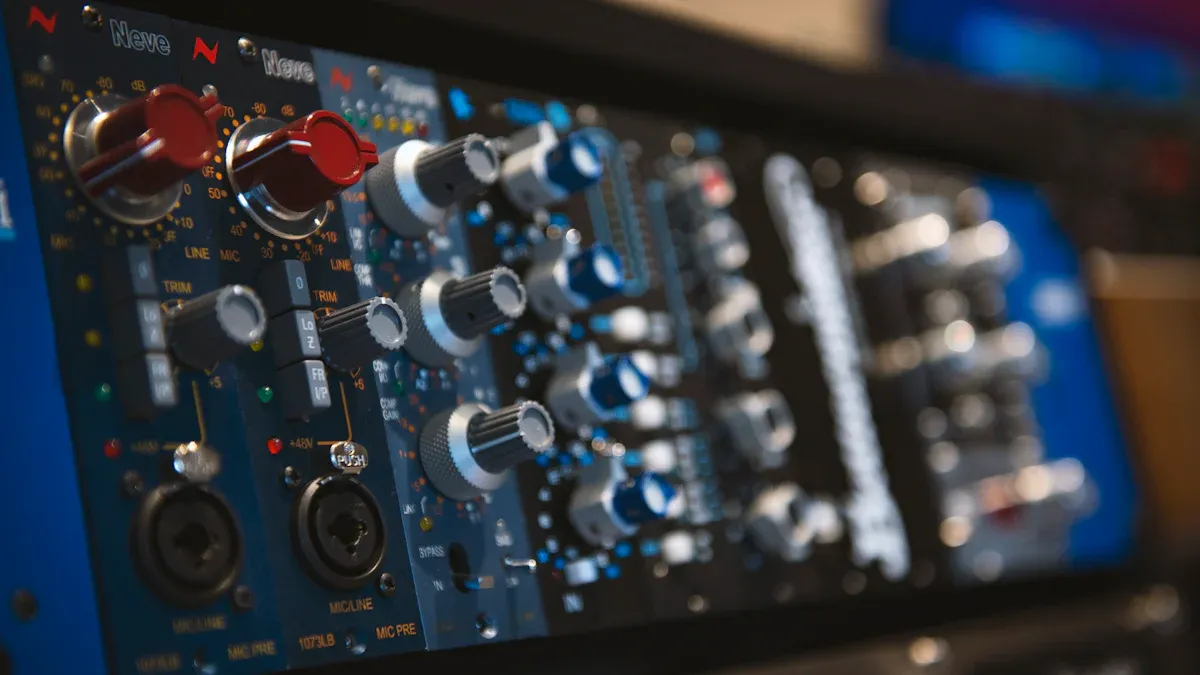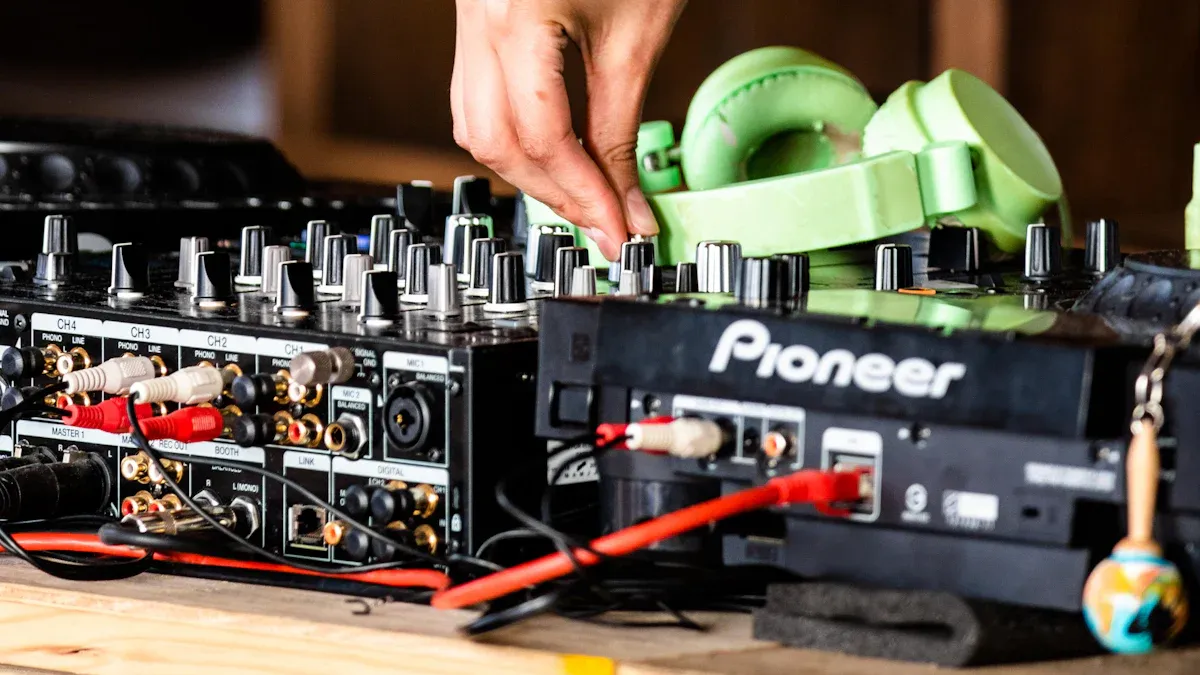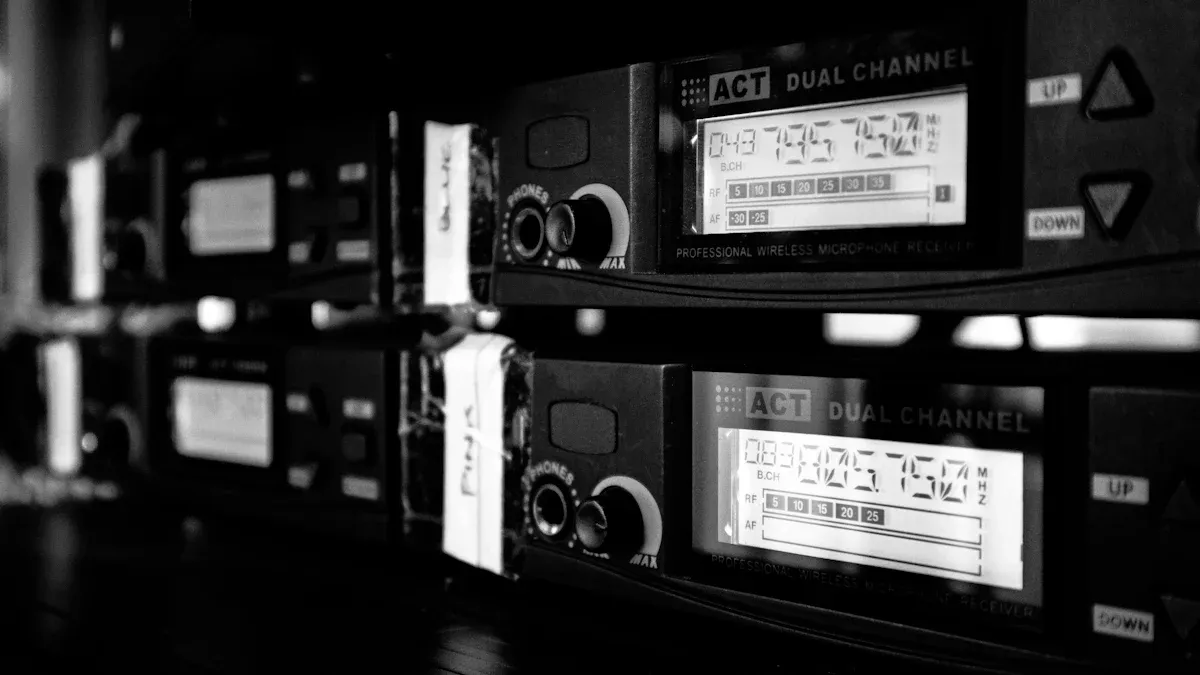What is the Mini-Circuits RMS-30+ RF Mixer All About?

The Mini-Circuits RMS-30+ stands as a high-performance, surface-mount (SMT), double-balanced RF mixer. Its compact size and excellent electrical characteristics make it a significant component in various RF and microwave systems. The global market for RF mixers was estimated at US$ 1568 million in 2024 by one report, while another analysis valued the market at USD 3,080.54 million in the same year. This blog post aims to delve into the specifications, applications, and integration considerations of this versatile RMS-30+ mixer for engineers, hobbyists, and students.
Key Takeaways
The Mini-Circuits RMS-30+ is a small, powerful RF mixer. It works well in many radio systems.
This mixer handles a wide range of frequencies. It is good for wireless devices, testing tools, and special RF systems.
You need to give the mixer the right power. You also need to match its connections for it to work best.
The RMS-30+ is built to last. It meets environmental safety rules.
RMS-30+ Key Specifications
This section details the core technical characteristics of the Mini-Circuits RMS-30+ mixer. Engineers and designers rely on these specifications to determine the component's suitability for their applications.
Frequency Capabilities
The RMS-30+ operates across a broad spectrum, making it versatile for many RF systems. It handles specific frequency ranges for its Radio Frequency (RF), Local Oscillator (LO), and Intermediate Frequency (IF) ports.
Port | |
|---|---|
RF | 5 - 3000 |
LO | 5 - 3000 |
IF | 5 - 2000 |
The RMS-30+ offers a wide operational bandwidth. This allows it to function effectively in diverse communication standards. Comparing its frequency range to other commercially available double-balanced RF mixers provides context for its capabilities:
Mixer Model | RF Frequency (MHz/GHz) | LO Frequency (MHz/GHz) | IF Frequency (MHz/GHz) |
|---|---|---|---|
RMS-30+ | 200 - 3000 MHz | 200 - 3000 MHz | DC - 1000 MHz |
Pasternack PE86X1022 | 5 MHz - 3.5 GHz | 5 MHz - 3.5 GHz | 5 MHz - 2.5 GHz |
MACOM MAMX-011144 | 5.5 - 19 GHz | 5.5 - 19 GHz | DC - 6 GHz |
DS Instruments MX30000PRO | 15 - 30 GHz | 18 - 30 GHz | 10 MHz - 8 GHz |
Qorvo QPX0004D | Not explicitly stated | 24 - 34 GHz | DC - 7 GHz |
The RMS-30+ demonstrates a strong performance profile within the lower to mid-gigahertz range, suitable for many common wireless applications.
Power Handling and Linearity
Power handling is crucial for mixer performance. The RMS-30+ requires a typical LO power of +7 dBm. This power level ensures optimal mixing efficiency and linearity. The mixer also has an RF power rating of 200mW. This indicates the maximum RF input power it can safely handle without damage. Its 1 dB compression point (P1dB) is +1 dBm. This metric shows the input power level where the mixer's output power deviates from ideal linear behavior by 1 dB. A higher P1dB generally indicates better linearity.
Performance Metrics
The RMS-30+ exhibits excellent performance characteristics. Its typical conversion loss is 7 dB. Conversion loss measures the reduction in signal power from the RF input to the IF output. Lower conversion loss means more efficient signal transfer. The mixer also provides good isolation between its ports. Isolation prevents unwanted signals from leaking between the RF, LO, and IF ports. This ensures signal purity and reduces interference. The RMS-30+ produces both sum and difference frequencies at a single output. This dual functionality is a fundamental aspect of mixer operation, allowing for up-conversion or down-conversion of signals.
Physical and Environmental Aspects
The RMS-30+ comes in a surface-mount technology (SMT) package. This compact design allows for efficient use of board space in modern electronic assemblies. Its robust construction ensures reliable operation in various environmental conditions. It also complies with RoHS and REACH directives, reflecting its commitment to environmental standards.
RMS-30+ Applications

This section explores the diverse fields and systems where engineers effectively utilize the RMS-30+ mixer. Its broad frequency range and robust performance make it a valuable component across many industries.
Wireless Systems
The RMS-30+ plays a crucial role in various wireless communication systems. Its ability to handle signals from 200 MHz to 3000 MHz makes it ideal for many common standards. For instance, it finds use in Global Positioning System (GPS) receivers, where it down-converts satellite signals for processing. Industrial, Scientific, and Medical (ISM) band devices also benefit from its performance, enabling reliable data transmission. Furthermore, the mixer supports Multichannel Multipoint Distribution Service (MMDS) applications, which deliver broadband wireless services. Personal Communication Services (PCS) and Universal Mobile Telecommunications System (UMTS) infrastructure also incorporate such mixers for signal conversion within their transceivers.
Test and Measurement
In the realm of test and measurement, the RMS-30+ serves as a fundamental building block. Engineers integrate it into sophisticated test equipment to analyze and generate RF signals. For example, spectrum analyzers use mixers to down-convert high-frequency input signals to a lower intermediate frequency. This allows for easier processing and display of the signal's spectral content. Signal generators also employ mixers to create precise output frequencies by combining a stable local oscillator signal with a modulated input. The mixer's consistent performance ensures accurate and repeatable measurements, which is critical for validating RF designs.
Specialized RF Systems
Beyond common wireless and test applications, the RMS-30+ extends its utility to more specialized RF systems. Satellite communication systems rely on mixers for both up-conversion and down-conversion of signals transmitted to and from satellites. This ensures clear communication over long distances. Radar systems also utilize mixers to process reflected signals, helping to determine the range, speed, and direction of targets. In defense and aerospace applications, where reliability and performance are paramount, the RMS-30+ contributes to critical communication and sensing platforms. Its robust design ensures operation in demanding environments, making it a trusted component for these high-stakes systems.
Integrating the RMS-30+

Designers must carefully consider several factors when incorporating the RMS-30+ into their circuits. Proper integration ensures optimal performance and reliability. This section offers practical advice for successful implementation.
Drive Level Considerations
The Local Oscillator (LO) drive level is critical for the RMS-30+ mixer's performance. Engineers must provide an optimal +7 dBm LO power. This specific power level ensures the mixer operates efficiently. It also helps maintain linearity and minimizes unwanted intermodulation products. Supplying too little or too much LO power can degrade the mixer's conversion loss and isolation characteristics.
Circuit Matching
Proper impedance matching is essential for any RF circuit, including those using the RMS-30+. Matching networks ensure maximum power transfer between components. They also minimize signal reflections. The RMS-30+ typically expects a 50-ohm impedance at its RF, LO, and IF ports. Designers should use appropriate matching circuits, such as L-C networks, to achieve this impedance. This practice helps maintain signal integrity and prevents power loss.
Layout Best Practices
A well-designed Printed Circuit Board (PCB) layout significantly impacts the RMS-30+ mixer's performance. Designers should group similar components to shorten signal paths and reduce crosstalk. They must also maintain consistent spacing for signal traces. This helps preserve signal symmetry and balance. A solid, continuous ground plane is crucial. It provides a low-impedance reference and reduces electromagnetic field coupling. Placing decoupling capacitors close to the power and ground pins of ICs helps reduce power supply noise. Mini-Circuits offers resources like the TB-RMS-30+ evaluation board, its PCB layout (98-PL-052), and Gerber files. These resources provide excellent examples of effective layout practices for the RMS-30+.
The Mini-Circuits RMS-30+ stands out for its versatility, high performance, and robust design. It features Level 7 SMT construction and complies with RoHS/REACH standards. Its broad frequency range and excellent electrical characteristics make it highly suitable for demanding RF and microwave applications. Designers should consider the RMS-30+ for their next project. It offers a reliable, compact, and efficient RF mixer solution.
FAQ
What is the primary function of the Mini-Circuits RMS-30+ mixer?
The RMS-30+ is a double-balanced RF mixer. It combines two input signals, RF and LO. This process produces sum and difference frequencies at the IF output. This function is essential for frequency conversion in various electronic systems.
What LO power does the RMS-30+ require for optimal performance?
The RMS-30+ requires an optimal LO power of +7 dBm. This specific power level ensures efficient mixing operation. It also helps maintain the mixer's linearity. This minimizes unwanted signal distortion.
Is the RMS-30+ suitable for surface-mount assembly?
Yes, the RMS-30+ comes in a compact surface-mount technology (SMT) package. This design allows for efficient use of board space. It also simplifies integration into modern electronic assemblies.
What are some common applications for the RMS-30+?
Engineers use the RMS-30+ in wireless communication systems like GPS and PCS. It also finds use in test and measurement equipment, such as spectrum analyzers. Specialized systems like radar and satellite communication also benefit from its performance.
Does the RMS-30+ comply with environmental standards?
Yes, the RMS-30+ complies with both RoHS and REACH directives. This demonstrates its commitment to environmental standards. Its robust construction also ensures reliable operation in various conditions.
See Also
Exploring Isolation Amplifier IC Chips: Functions and Practical Applications
Understanding IC Demodulators: Essential Functions and Operational Significance
Discovering IC Audio Signal Processors: Core Characteristics and Capabilities
Real-Time Microcontroller ICs: Unveiling Their Operation and Functionality
Analog IC Design: Fundamental Principles and Diverse Practical Implementations
